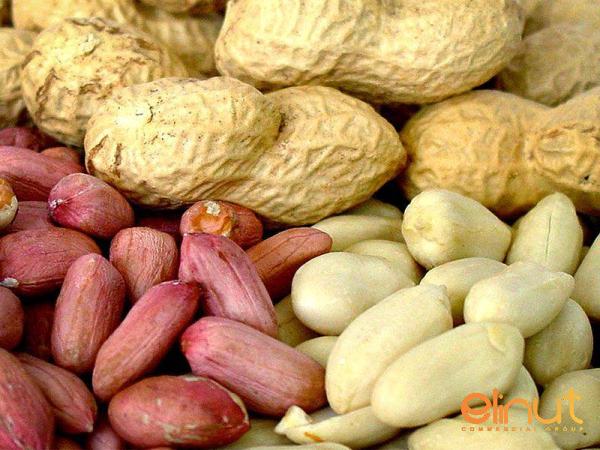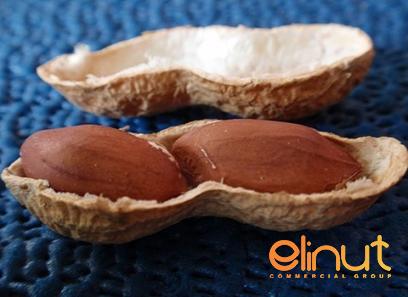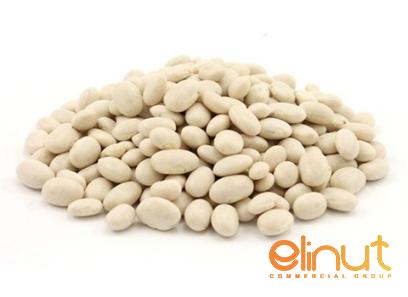Title: Unlocking the Purchase and Pricing Dynamics of Brand Peanut Products Introduction: Brand peanut products have become a kitchen staple for many consumers worldwide. From peanut butter and spreads to roasted peanuts, these products satisfy cravings and offer various health benefits. However, understanding the factors that influence consumers’ purchase decisions and pricing strategies employed by brand peanut product manufacturers can provide valuable insights into this dynamic industry. The Purchase Decision Process: Consumers’ path to purchasing brand peanut products typically involves several stages, each influenced by different factors. Understanding these stages can help brands tailor their marketing strategies effectively. 1. Need recognition: Consumers may experience a craving for peanuts or may recognize the versatility and health benefits associated with peanut products. 2. Information search: Consumers seek relevant information about different brands, including attributes like taste, nutritional value, price, and packaging.
nuts
 This information can be obtained through online sources, advertisements, and recommendations from friends or family. 3. Evaluation of alternatives: Consumers weigh various factors when comparing different brands of peanut products. These factors may include taste preference, brand reputation, price, ingredient quality, and product packaging. 4. Purchase decision: After evaluating the available options, consumers make a purchase decision based on their priorities and preferences. Influential factors at this stage may include price promotions, discounts, and availability. 5. Post-purchase evaluation: Consumers assess their satisfaction with the purchased brand peanut product in terms of taste, quality, and overall value for money. Positive experiences may lead to repeat purchases and brand loyalty. Factors Influencing Purchase Decisions: Several key factors influence consumers’ decision-making when it comes to brand peanut products:
This information can be obtained through online sources, advertisements, and recommendations from friends or family. 3. Evaluation of alternatives: Consumers weigh various factors when comparing different brands of peanut products. These factors may include taste preference, brand reputation, price, ingredient quality, and product packaging. 4. Purchase decision: After evaluating the available options, consumers make a purchase decision based on their priorities and preferences. Influential factors at this stage may include price promotions, discounts, and availability. 5. Post-purchase evaluation: Consumers assess their satisfaction with the purchased brand peanut product in terms of taste, quality, and overall value for money. Positive experiences may lead to repeat purchases and brand loyalty. Factors Influencing Purchase Decisions: Several key factors influence consumers’ decision-making when it comes to brand peanut products:
Specifications of nuts
 1. Taste and quality: Consumers consider the taste and quality of peanuts and peanut products as crucial factors. Brands that consistently deliver superior taste and quality gain a competitive edge. 2. Health benefits: The health-conscious trend among consumers has significantly influenced purchase decisions. Peanut products that are perceived as healthy, low in additives, and offer nutritional benefits are more likely to be chosen. 3. Pricing: Price is a critical factor influencing consumer behavior in the peanut product market. Consumers strive to strike a balance between price and perceived value. Thus, brands need to consider pricing strategies that align with the target market’s price sensitivity. Pricing Strategies: Developing an effective pricing strategy for brand peanut products entails considering several factors, including production costs, market competition, and targeted customer segments. Here are some commonly used pricing strategies: 1. Cost-plus pricing: This strategy involves determining the product’s cost and adding a desired profit margin. Considering factors such as raw material costs, manufacturing expenses, and overheads, brands can arrive at a price that covers costs and generates a profit. 2. Penetration pricing: This strategy aims to garner market share by offering peanut products at a lower price than competitors.
1. Taste and quality: Consumers consider the taste and quality of peanuts and peanut products as crucial factors. Brands that consistently deliver superior taste and quality gain a competitive edge. 2. Health benefits: The health-conscious trend among consumers has significantly influenced purchase decisions. Peanut products that are perceived as healthy, low in additives, and offer nutritional benefits are more likely to be chosen. 3. Pricing: Price is a critical factor influencing consumer behavior in the peanut product market. Consumers strive to strike a balance between price and perceived value. Thus, brands need to consider pricing strategies that align with the target market’s price sensitivity. Pricing Strategies: Developing an effective pricing strategy for brand peanut products entails considering several factors, including production costs, market competition, and targeted customer segments. Here are some commonly used pricing strategies: 1. Cost-plus pricing: This strategy involves determining the product’s cost and adding a desired profit margin. Considering factors such as raw material costs, manufacturing expenses, and overheads, brands can arrive at a price that covers costs and generates a profit. 2. Penetration pricing: This strategy aims to garner market share by offering peanut products at a lower price than competitors.
Buy nuts
 It is most effective when brands have economies of scale or a cost advantage over competitors. 3. Premium pricing: In this strategy, brands position their products as premium offerings through superior quality, taste, or unique features. By pricing their peanut products at a premium, brands appeal to consumers who associate a higher price with higher quality. 4. Competitive pricing: This strategy involves setting prices based on the prevailing market rates. Brands monitor competitors’ prices closely and adjust their pricing accordingly to maintain competitiveness. 5. Psychological pricing: This strategy utilizes psychological factors, such as pricing products just below a whole number (e.g., $9.99 instead of $10.00) to create the perception of a lower price. Pricing Considerations for Brand Peanut Products: While pricing strategies provide a framework, brand peanut product manufacturers must also consider the following factors when setting prices: 1. Product differentiation: Brands that offer unique features or value propositions can command higher prices.
It is most effective when brands have economies of scale or a cost advantage over competitors. 3. Premium pricing: In this strategy, brands position their products as premium offerings through superior quality, taste, or unique features. By pricing their peanut products at a premium, brands appeal to consumers who associate a higher price with higher quality. 4. Competitive pricing: This strategy involves setting prices based on the prevailing market rates. Brands monitor competitors’ prices closely and adjust their pricing accordingly to maintain competitiveness. 5. Psychological pricing: This strategy utilizes psychological factors, such as pricing products just below a whole number (e.g., $9.99 instead of $10.00) to create the perception of a lower price. Pricing Considerations for Brand Peanut Products: While pricing strategies provide a framework, brand peanut product manufacturers must also consider the following factors when setting prices: 1. Product differentiation: Brands that offer unique features or value propositions can command higher prices.
nuts + buy and sell
 Differentiation could be based on taste, quality, product variants, or packaging. 2. Distribution costs: Brands must consider the costs associated with distributing their peanut products to various retail outlets. Higher distribution costs may result in higher prices. 3. Promotional activities: Brands often run promotional activities, such as discounts or buy-one-get-one-free offers, to encourage trial and increase sales. These promotions may influence the final pricing decision. 4. Perceived value: Consumers assess the perceived value of a product, considering its quality, taste, health benefits, and price. Brands that can create a perception of higher value can justify premium pricing. Conclusion: Understanding the purchase decision process and employing effective pricing strategies is key to successfully navigating the brand peanut product market. Brands that focus on meeting consumers’ preferences for taste, quality, health benefits, and fair pricing have a higher chance of gaining a competitive edge and building customer loyalty. By continuously evaluating consumer preferences and market dynamics, brand peanut product manufacturers can stay on top of the evolving industry landscape.
Differentiation could be based on taste, quality, product variants, or packaging. 2. Distribution costs: Brands must consider the costs associated with distributing their peanut products to various retail outlets. Higher distribution costs may result in higher prices. 3. Promotional activities: Brands often run promotional activities, such as discounts or buy-one-get-one-free offers, to encourage trial and increase sales. These promotions may influence the final pricing decision. 4. Perceived value: Consumers assess the perceived value of a product, considering its quality, taste, health benefits, and price. Brands that can create a perception of higher value can justify premium pricing. Conclusion: Understanding the purchase decision process and employing effective pricing strategies is key to successfully navigating the brand peanut product market. Brands that focus on meeting consumers’ preferences for taste, quality, health benefits, and fair pricing have a higher chance of gaining a competitive edge and building customer loyalty. By continuously evaluating consumer preferences and market dynamics, brand peanut product manufacturers can stay on top of the evolving industry landscape.











Your comment submitted.